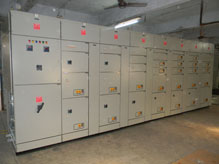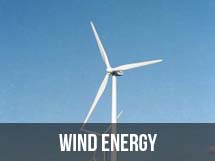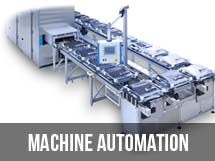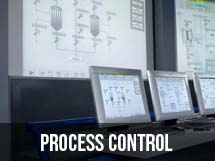Products - OEM Control Panel - HVAC Panel
Following are the OEM application in which Control Systems Engineers have devoted many years in development
Wind Energy / Wind Turbine Panel | Compressor Control Panel | Flare Systems | Incinerators | Evaporators |
Filtration systems | Boilers | Chillers | Spray Driers
| Krom Schroder | Test / Simulation | Transfomers | HVAC Panel
Control Strategies
The simplest control in HVAC system is cycling or on/off control to meet part load conditions. If
building only needs half the energy that the system is designed to deliver, the system runs for about
ten minutes, turns off for ten minutes, and then cycles on again. As the building load increases, the
system runs longer and its off period is shorter.
One problem faced by this type of control is short-cycling which keeps the system operating at the
inefficient condition and wears the component quickly. A furnace or air-conditioner takes several
minutes before reaching "steady-state" performance. "Well," you say, "why not just lengthen the time
between starts to avoid short-cycling?" This is possible but at a cost of some discomfort for short time.
The longer the time between cycles, the wider the temperature swings in the space.Trying to find a
compromise that allows adequate comfort without excessive wear on the equipment is modulation or
proportional control. Under this concept, if a building is calling for half the rated capacity of the chiller,
the chilled water is supplied at half the rate or in case of heating furnace; fuel is fed to the furnace at
half the design rate: the energy delivery is proportional to the energy demand. While this system is
better than cycling, it also has its problems. Equipment has a limited turn-down ratio. A furnace with a
5:1 turn-down ratio can only be operated above 20% of rated capacity. If the building demand is lower
than that, cycling would still have to be used.
An alternate method of control under part-load conditions is staging. Several small units (e.g., four
units at 25% each) are installed instead of one large unit. When conditions call for half the design
capacity, only two units operate. At 60% load, two units are base-loaded (run continuously), and a
third unit swings (is either cycled or modulated) as needed. To prevent excessive wear, sequencing is
often used to periodically change the unit being cycled. To continue our example at 60% load:
assume Units 1 and 2 are base-loaded, and Unit 3 has just cycled on. When the cycling portion of the
load is satisfied, Unit 1 cycle off, and Units 2 and 3 become base loaded. When more capacity is
needed, Unit 4 cycles on, and so on.
Where are HVAC controls required?
The HVAC control system is typically distributed across three areas:
1) The HVAC equipment and their controls located in the main mechanical room. Equipment
includes chillers, boiler, hot water generator, heat exchangers, pumps etc.
2) The weather maker or the “Air Handling Units (AHUs)” may heat, cool, humidify, dehumidify,
ventilate, or filter the air and then distribute that air to a section of the building. AHUs are available
in various configurations and can be placed in a dedicated room called secondary equipment
room or may be located in an open area such as roof top air-handling units.
3) The individual room controls depending on the HVAC system design. The equipment includes fan
coil units, variable air volume systems, terminal reheat, unit ventilators, exhausters, zone temperature/humidistat devices etc.
Benefits of a Control System
Controls are required for one or more of the following reasons:
1) Maintain thermal comfort conditions
2) Maintain optimum indoor air quality
3) Reduce energy use
4) Safe plant operation
5) To reduce manpower costs
6) Identify maintenance problems
7) Efficient plant operation to match the load
8) Monitoring system performance
Following are the OEM application in which Control Systems Engineers have devoted many years in development
Wind Energy / Wind Turbine Panel | Compressor Control Panel | Flare Systems | Incinerators | Evaporators |
Filtration systems | Boilers | Chillers | Spray Driers | Krom Schroder | Test / Simulation | Transfomers | HVAC Panel
Filtration systems | Boilers | Chillers | Spray Driers | Krom Schroder | Test / Simulation | Transfomers | HVAC Panel
Control Strategies
The simplest control in HVAC system is cycling or on/off control to meet part load conditions. If building only needs half the energy that the system is designed to deliver, the system runs for about ten minutes, turns off for ten minutes, and then cycles on again. As the building load increases, the system runs longer and its off period is shorter.
One problem faced by this type of control is short-cycling which keeps the system operating at the inefficient condition and wears the component quickly. A furnace or air-conditioner takes several minutes before reaching "steady-state" performance. "Well," you say, "why not just lengthen the time between starts to avoid short-cycling?" This is possible but at a cost of some discomfort for short time. The longer the time between cycles, the wider the temperature swings in the space.Trying to find a compromise that allows adequate comfort without excessive wear on the equipment is modulation or proportional control. Under this concept, if a building is calling for half the rated capacity of the chiller, the chilled water is supplied at half the rate or in case of heating furnace; fuel is fed to the furnace at half the design rate: the energy delivery is proportional to the energy demand. While this system is better than cycling, it also has its problems. Equipment has a limited turn-down ratio. A furnace with a 5:1 turn-down ratio can only be operated above 20% of rated capacity. If the building demand is lower than that, cycling would still have to be used.
An alternate method of control under part-load conditions is staging. Several small units (e.g., four units at 25% each) are installed instead of one large unit. When conditions call for half the design capacity, only two units operate. At 60% load, two units are base-loaded (run continuously), and a third unit swings (is either cycled or modulated) as needed. To prevent excessive wear, sequencing is often used to periodically change the unit being cycled. To continue our example at 60% load: assume Units 1 and 2 are base-loaded, and Unit 3 has just cycled on. When the cycling portion of the load is satisfied, Unit 1 cycle off, and Units 2 and 3 become base loaded. When more capacity is needed, Unit 4 cycles on, and so on.
Where are HVAC controls required?
The HVAC control system is typically distributed across three areas:
1) The HVAC equipment and their controls located in the main mechanical room. Equipment includes chillers, boiler, hot water generator, heat exchangers, pumps etc.
2) The weather maker or the “Air Handling Units (AHUs)” may heat, cool, humidify, dehumidify, ventilate, or filter the air and then distribute that air to a section of the building. AHUs are available in various configurations and can be placed in a dedicated room called secondary equipment room or may be located in an open area such as roof top air-handling units.
3) The individual room controls depending on the HVAC system design. The equipment includes fan coil units, variable air volume systems, terminal reheat, unit ventilators, exhausters, zone temperature/humidistat devices etc.
Benefits of a Control System
Controls are required for one or more of the following reasons:
1) Maintain thermal comfort conditions
2) Maintain optimum indoor air quality
3) Reduce energy use
4) Safe plant operation
5) To reduce manpower costs
6) Identify maintenance problems
7) Efficient plant operation to match the load
8) Monitoring system performance
The simplest control in HVAC system is cycling or on/off control to meet part load conditions. If building only needs half the energy that the system is designed to deliver, the system runs for about ten minutes, turns off for ten minutes, and then cycles on again. As the building load increases, the system runs longer and its off period is shorter.
One problem faced by this type of control is short-cycling which keeps the system operating at the inefficient condition and wears the component quickly. A furnace or air-conditioner takes several minutes before reaching "steady-state" performance. "Well," you say, "why not just lengthen the time between starts to avoid short-cycling?" This is possible but at a cost of some discomfort for short time. The longer the time between cycles, the wider the temperature swings in the space.Trying to find a compromise that allows adequate comfort without excessive wear on the equipment is modulation or proportional control. Under this concept, if a building is calling for half the rated capacity of the chiller, the chilled water is supplied at half the rate or in case of heating furnace; fuel is fed to the furnace at half the design rate: the energy delivery is proportional to the energy demand. While this system is better than cycling, it also has its problems. Equipment has a limited turn-down ratio. A furnace with a 5:1 turn-down ratio can only be operated above 20% of rated capacity. If the building demand is lower than that, cycling would still have to be used.
An alternate method of control under part-load conditions is staging. Several small units (e.g., four units at 25% each) are installed instead of one large unit. When conditions call for half the design capacity, only two units operate. At 60% load, two units are base-loaded (run continuously), and a third unit swings (is either cycled or modulated) as needed. To prevent excessive wear, sequencing is often used to periodically change the unit being cycled. To continue our example at 60% load: assume Units 1 and 2 are base-loaded, and Unit 3 has just cycled on. When the cycling portion of the load is satisfied, Unit 1 cycle off, and Units 2 and 3 become base loaded. When more capacity is needed, Unit 4 cycles on, and so on.
Where are HVAC controls required?
The HVAC control system is typically distributed across three areas:
1) The HVAC equipment and their controls located in the main mechanical room. Equipment includes chillers, boiler, hot water generator, heat exchangers, pumps etc.
2) The weather maker or the “Air Handling Units (AHUs)” may heat, cool, humidify, dehumidify, ventilate, or filter the air and then distribute that air to a section of the building. AHUs are available in various configurations and can be placed in a dedicated room called secondary equipment room or may be located in an open area such as roof top air-handling units.
3) The individual room controls depending on the HVAC system design. The equipment includes fan coil units, variable air volume systems, terminal reheat, unit ventilators, exhausters, zone temperature/humidistat devices etc.
Benefits of a Control System
Controls are required for one or more of the following reasons:
1) Maintain thermal comfort conditions
2) Maintain optimum indoor air quality
3) Reduce energy use
4) Safe plant operation
5) To reduce manpower costs
6) Identify maintenance problems
7) Efficient plant operation to match the load
8) Monitoring system performance











